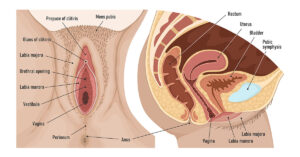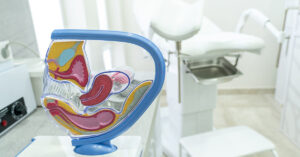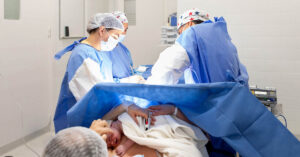Table of Contents:
- Overview
- What is Labiaplasty?
- What is the Purpose of a Labiaplasty?
- Reasons For Getting A Labiaplasty
- Brief History & Evolution of Labiaplasty
- Is Labiaplasty A Commonly Performed Procedure?
- Appropriate Age For Undergoing Labiaplasty
- How Is Labiaplasty Performed?
- How Long Does The Procedure Last?
- Risks & Complications Associated With Labiaplasty
- Alternatives To Labiaplasty
- Importance Of Choosing The Right Surgeon
- References
Labiaplasty is a highly sought-after procedure in gynecological and reconstructive surgery, offering relief and renewed confidence to many women. Women seek labiaplasty for various reasons, including discomfort with underwear and tight clothing, pain during activities, or because they feel self-conscious about their appearance.

This surgery goes beyond improving appearance as it alleviates physical discomfort, boosts self-esteem, and addresses a deeply personal aspect of femininity where looks and function intertwine.
What is Labiaplasty?

Labiaplasty is an elective surgical procedure which involves reconstructing the vaginal area. It entails modifying the length and/or shape of the labia minora, which are the inner lips of the female genitalia.
What is the Purpose of a Labiaplasty?
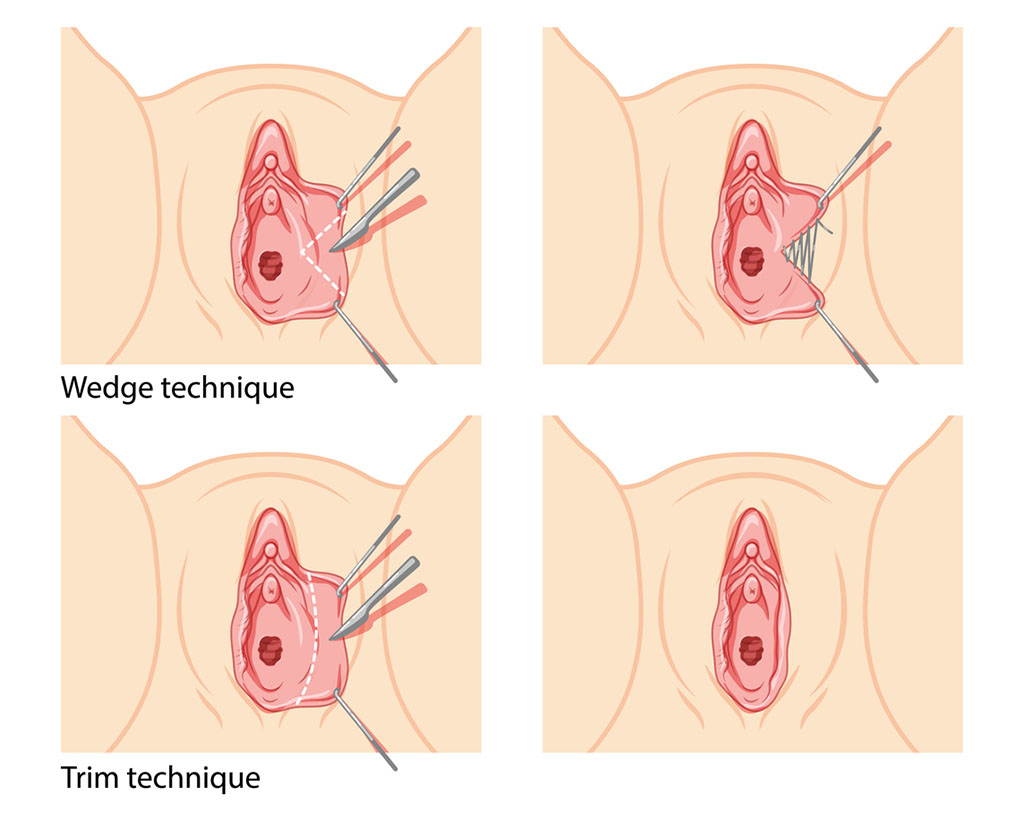
The primary goal of labiaplasty is to achieve genital proportion and harmony that align seamlessly with each patient’s unique anatomy. It does this by surgically altering the appearance of the labia minora, addressing concerns related to size, shape, and symmetry.
Reasons For Getting A Labiaplasty
Labiaplasty is sought for various reasons, including medical necessity, cosmetic desires, psychological well-being, emotional health, and other personal considerations. Below is a detailed exploration of each reason.
Medical Reasons

1. To alleviate physical discomfort arising from enlarged labia
Enlarged or elongated labia minora can lead to various forms of physical discomfort with clothing or during everyday activities.
Walking and daily movements: As a woman moves throughout the day, enlarged labia can rub against underwear, clothing, or skin, causing constant friction. This friction can lead to soreness, irritation, and chafing.
Exercise and physical activity: Activities involving repetitive movements or thigh friction, such as running, cycling, and horseback riding, can cause friction burns or injuries to enlarged or protruding labial tissue.
Pressure and pinching: Tight pants, leggings, or swimwear can pinch or compress enlarged labia, causing discomfort and pain.
How Labiaplasty Helps:
A labiaplasty procedure not only reduces the size of the labia but also smooths out any irregular edges, addressing areas prone to chafing and irritation. Removing excess tissue decreases the bulkiness of the labia minora, allowing the labia majora (outer lips) to better protect against friction, chafing, and pressure. The procedure can also correct asymmetry between the labia minora, ensuring a more even shape and reducing discomfort caused by uneven labia.
2. Hygiene Concerns
Excess labial tissue can trap moisture, sweat, and bacteria, leading to difficulties in maintaining good hygiene and increasing the risk of infections such as yeast infections or urinary tract infections. These infections can add to the physical discomfort caused by enlarged labia.
How Labiaplasty Helps:
Following a labiaplasty, the amount of labial tissue is reduced, simplifying the maintenance of proper hygiene and reducing the risk of trapped moisture and bacteria. This can decrease the frequency of infections and the associated discomfort.
Sexual Satisfaction & Intimacy
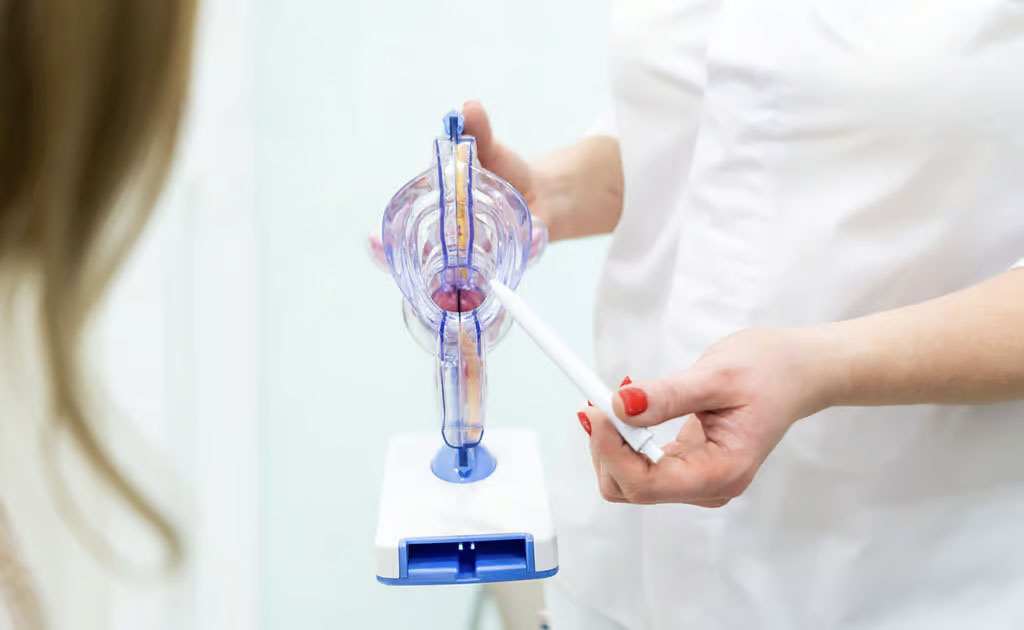
Enlarged or elongated labia can cause discomfort and pain during intercourse, leading to reduced sexual pleasure. This often leads to anxiety, decreased libido, and avoidance of sexual activity. Addressing these issues through labiaplasty can enhance physical comfort, boost self-esteem, and improve intimate experiences.
How Labiaplasty Helps:
By reducing the size and correcting asymmetry of the labia minora, labiaplasty eliminates twisting and pinching of hypertrophied labia during sexual activities, allowing women to engage without pain or irritation. This leads to more fulfilling sexual experiences and stronger intimate relationships, promoting long-term improvements in sexual health and overall well-being.
Cosmetic Reasons

Improvement in the cosmetic appearance of the external genitalia
Women cite various reasons for wanting to enhance the appearance of their external genitalia.
Shape: The shape of the labia minora can vary significantly between individuals. Some women may feel uncomfortable with their labia’s natural shape, which can affect their confidence and satisfaction with their appearance.
Size: Some women may feel self-conscious about the size or protrusion of their labia minora, especially if they extend beyond the labia majora. This can lead to feelings of embarrassment, particularly during intimate moments or when wearing certain types of clothing.
Asymmetry: It is common and normal for women to have labia minora that are not perfectly symmetrical. However, asymmetry can be a source of self-consciousness and dissatisfaction to some.
How Labiaplasty Helps:
Labiaplasty can effectively address cosmetic concerns related to the size, shape, and symmetry of the labia. Removing excess tissue helps achieve a more streamlined appearance and eliminates issues with protrusion and asymmetry.
Additionally, labiaplasty refines the labial shape through various techniques, further enhancing symmetry and overall aesthetics. The improved cosmetic appearance of the external genitalia can increase comfort and confidence during intimate moments, enhancing sexual satisfaction. Enhanced body image and self-esteem can positively influence various aspects of daily life, from clothing choices to participating in activities without self-consciousness.
Psychological & Emotional Reasons
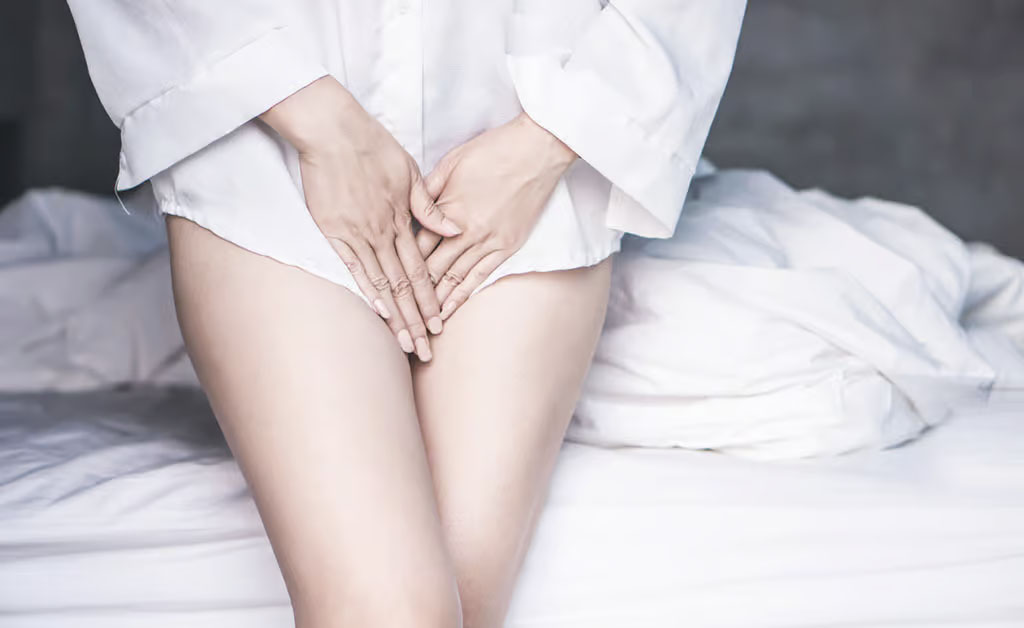
1. Self-Confidence:
Feeling uncomfortable or self-conscious about the appearance of the labia can negatively impact self-confidence. Persistent dissatisfaction with genital appearance can lead to emotional distress and affect relationships.
How Labiaplasty Helps:
Labiaplasty can help individuals feel more comfortable and confident in intimate settings and in their daily lives. It offers a solution by giving women their desired labial anatomy, addressing their concerns and improving their emotional health.
Other Reasons

Cultural & Social influences:
Cultural norms and societal pressures regarding genital appearance can influence an individual’s decision to undergo labiaplasty, particularly in regions where specific aesthetic ideals prevail.
Similarly, exposure to idealized images of genital appearance through media and the internet may contribute to heightened awareness and desire for aesthetic improvement. Increased access to information about labiaplasty and its benefits through healthcare providers, online resources, and peer experiences can also influence an individual’s decision-making process.
Understanding the reasons for labiaplasty is crucial, but it is also essential to know the procedure’s history and evolution, its purpose, and potential risks. This comprehensive knowledge helps make informed decisions, set realistic expectations, and understand the advancements in surgical techniques that improve outcomes and minimize complications.
Brief History & Evolution of Labiaplasty
Labiaplasty has evolved significantly since the first published article in 1971 by American gynecologist Capraro. Initially, clinicians focused on reassuring patients about the natural diversity of genital appearance, intervening surgically only when physical discomfort or severe psychological distress was present.

Early medical literature from the 1970s to the early 2000s emphasized functional reasons for the procedure, such as irritation, hygiene issues or interference with sexual activity. Demand for labiaplasty grew in the late 1990s and early 2000s, influenced by media, popular culture, and the internet. Exposure to idealized images of female genitalia in the media and women’s magazines, along with reality TV shows like “Dr. 90210,” normalized the procedure. By the mid-2000s, many women learned about labiaplasty online, marking a shift in the doctor-patient relationship towards greater patient autonomy.
Today, labiaplasty is widely offered, focusing on both aesthetic and functional outcomes, and continues to evolve with advancements in medical technology and societal attitudes.
Is Labiaplasty A Commonly Performed Procedure?
Labiaplasty has experienced a remarkable surge in the United States, with the number of procedures rising by 600% in less than ten years, from 2,142 in 2011 to 12,903 in 2019. In 2019, the global number of labiaplasty procedures reached 164,667, marking a 24.1% increase from 2018 and a 73.3% surge since 2015. This made labiaplasty the 15th most popular plastic surgery procedure among women that year. However, because reporting procedures performed in the private sector are not mandatory, these figures might underestimate the actual numbers.

Globally, this rise can be attributed to various factors such as functional, sexual, and aesthetic concerns, as well as the widespread access to online information, the prevalence of images on the internet, grooming practices, societal pressures, and cultural influences.
Appropriate Age For Undergoing Labiaplasty
When it comes to the question of how old one has to be to undergo labiaplasty, an ideal candidate for the procedure is typically a woman aged 18 or older. They should be in sound mental & physical health and experiencing concerns related to the size or shape of their labia, whether for functional or aesthetic reasons.

In rare cases, a surgeon may consider performing the procedure on a young woman under 18, but this decision is usually reserved for situations where there is a medical indication, such as severe pain from a physical deformity of the labia or complications resulting from an injury. Several medical organizations support these guidelines. The American College of Obstetricians and Gynecologists (ACOG) recommends that labiaplasty be considered only for minors with significant congenital abnormalities or persistent symptoms directly related to labial anatomy.
How Is Labiaplasty Performed?
Executing a labiaplasty involves a series of precise steps to address both cosmetic and functional concerns effectively.
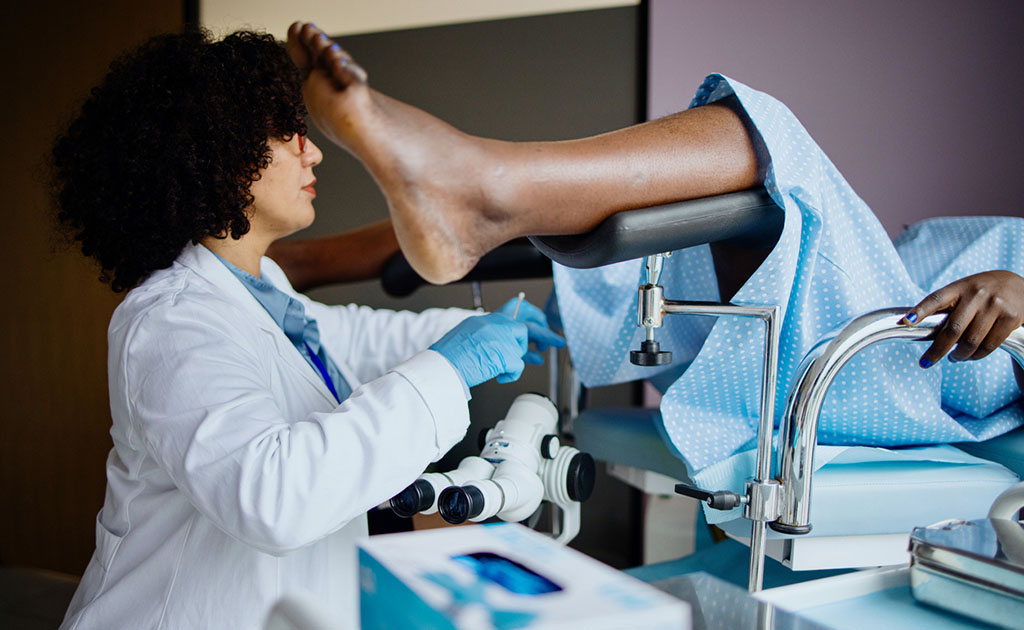
Anesthesia:
The choice of anesthesia is customized based on patient preferences and surgeon recommendations. Options include general, regional, or local anesthesia to ensure comfort throughout the procedure.
Positioning:
The patient is positioned in the lithotomy position, with legs supported in stirrups, allowing optimal exposure and visibility for the surgeon under well-lit conditions.
Incisions & Tissue Removal:
Following standard cleaning and draping, the surgeon makes careful incisions on the labia minora tailored to the chosen technique. Examples of commonly used techniques are:
- Trim/Edge/Linear/Amputation technique: This involves excising excess tissue along the outer edge of the labia minora, thereby reducing its length and size.
- Wedge Labiaplasty Technique: A V-shaped section from the middle third of the labia minora is removed, and the remaining edges are sutured together. This method results in a shorter and narrower labia minora with an enhanced cosmetic appearance.
- Z-Plasty Technique: This is a variation of the wedge technique involving multiple triangular incisions. The labial tissues are then repositioned in a zig-zag pattern, which is useful for cases involving asymmetry, scarring, or excess tissue. Incisions are strategically placed along the natural contours of the labia minora to minimize visible scarring and optimize cosmetic results.
In all techniques, the labia minora are meticulously reshaped to achieve the desired look, focusing on meeting the patient’s individualized aesthetic goals while ensuring functional comfort.
Suturing:
The procedure concludes with the closure of the incisions using fine, absorbable sutures. This step is crucial for securing the newly shaped labia, promoting proper healing, and minimizing scarring and recovery time.
How Long Does The Procedure Last?
The labiaplasty procedure typically lasts between one to two hours. The exact duration can vary depending on the complexity of the case, the specific surgical technique used, and whether any additional procedures are being performed concurrently. Regardless of the time taken, the surgeon will prioritize precision and care to ensure optimal results and patient safety.
Risks & Complications Associated With Labiaplasty
As with any other surgery, labiaplasty is also associated with certain risks and complications. The following are possible adverse effects that may follow a labiaplasty procedure:
- Infection
- Bleeding
- Formation of hematoma, leading to discomfort, pain, and swelling.
- Possibility of scarring, though this is less probable with the wedge and Z-plasty techniques.
- Temporary or permanent changes in sensation around the labia minora.
- Risk of asymmetry in the appearance of the labia.
- Challenges such as poor wound healing, breakdown and separation (particularly associated with wedge labiaplasty).
- Unsatisfactory cosmetic results that may not align with patients’ expectations, potentially necessitating a revision labiaplasty.
- Other complications related to the type of anesthesia used may be seen, such as allergic reactions, nausea, vomiting and arrhythmia.
Alternatives To Labiaplasty
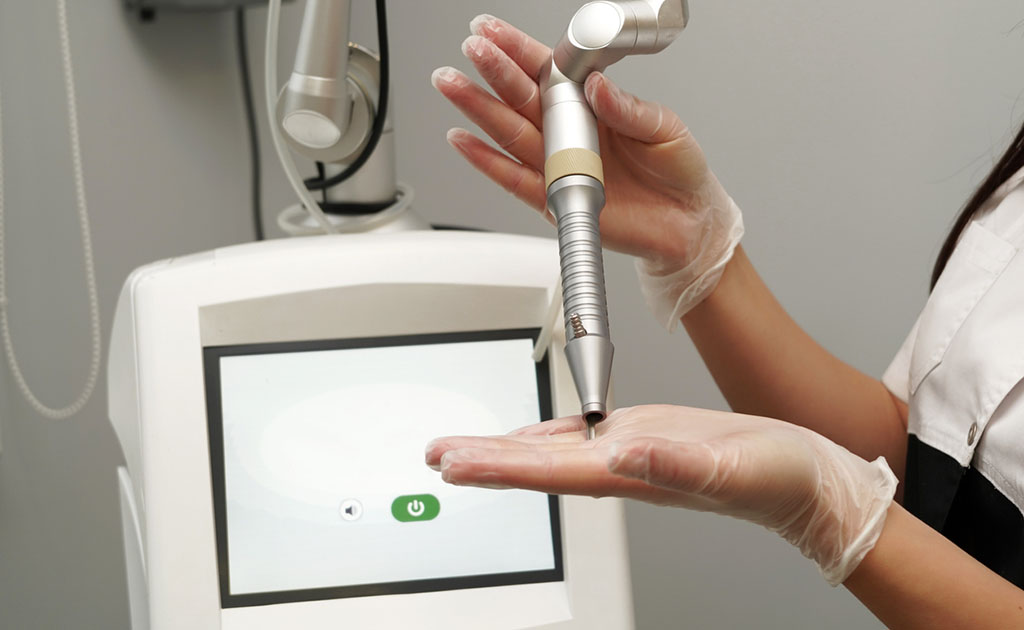
While labiaplasty is a common solution for addressing issues related to the size, shape, and/or symmetry of the labia minora, there are several non-surgical and less invasive alternatives available. These options may be suitable for women seeking relief from discomfort or cosmetic concerns without having to undergo surgery. Here are some alternatives to consider:
- Fractional CO2 Lasers: These laser treatments for vaginal rejuvenation tighten the vaginal area, including the labia. The treatment stimulates collagen production, potentially improving the appearance and firmness of the labial tissues without surgery.
- Radiofrequency (RF) Treatments: Radio Frequency treatments use heat to promote collagen production and tighten the vaginal tissues. These treatments can improve the appearance and elasticity of the labia.
- Dermal Fillers: Injectable fillers, commonly used for facial aesthetics, can also be used to enhance the labia majora, providing a more balanced appearance and potentially masking any concerns with the labia minora.
- Topical Treatments: Some topical treatments claim to improve the texture and appearance of the labial skin by moisturizing and promoting elasticity. While these may offer minor improvements, their effectiveness is typically limited compared to surgical options.
- Counselling: Working with a therapist specializing in body image issues can help address psychological concerns related to labial appearance and improve self-esteem without the need for surgery. For those experiencing discomfort during intimacy, sexual counselling can provide strategies and solutions to enhance comfort and confidence.
Importance Of Choosing The Right Surgeon
Choosing the right surgeon for labiaplasty is crucial for achieving desired results and ensuring safety. An experienced, skilled surgeon brings specialized knowledge, precise techniques, and a proven track record as they stay updated with advanced methods, prioritizing patient safety and comfort. A personalized approach and empathetic care foster trust, enhancing the patient’s emotional well-being. Selecting a highly qualified surgeon ensures optimal aesthetic and functional outcomes, reduced recovery times, and a positive surgical experience.

While there are non-surgical alternatives, most prefer labiaplasty for long-lasting results. Ultimately, it goes beyond cosmetic enhancement, empowering women to feel more comfortable and confident, significantly enhancing their quality of life. Labiaplasty NYC offers safe and effective minimally invasive gynecological procedures. Contact us today to consult with our experienced specialists.
References
- Furnas HJ, Graw GJ, Cho MJ, et al.. Safety in female genital plastic surgery Plast Reconstr Surg. 2020; 146:451e–463e.
- Sharp G, Maynard P, Hudaib AR, et al.. Do genital cosmetic procedures improve women’s self-esteem? A systematic review and meta-analysis Aesthet Surg J. 2020; 40:1143–1151.
- Giraldo F, González C, de Haro F. Central wedge nymphectomy with a 90-degree Z-plasty for aesthetic reduction of the labia minora. Plastic and reconstructive surgery. 2004 May 1;113(6):1820-5.
- Rodriguez SB. The History of Female Genital Cosmetic Surgery in the United States.
- International Society of Aesthetic Plastic Surgery. International Survey on Aesthetic/Cosmetic Procedures performed in 2019. https://www.isaps.org/wp-content/uploads/2020/12/Global-Survey-2019.pdf.

